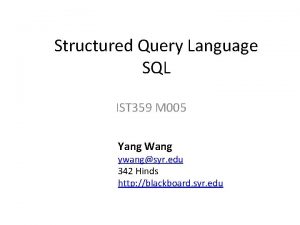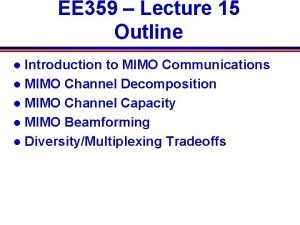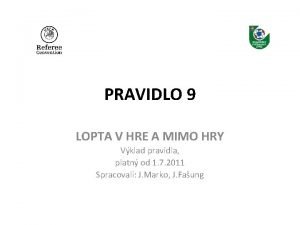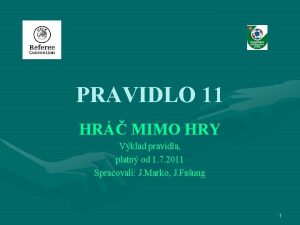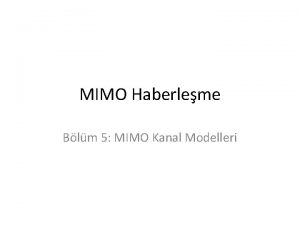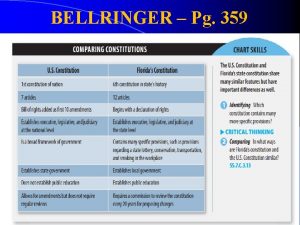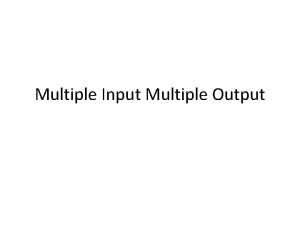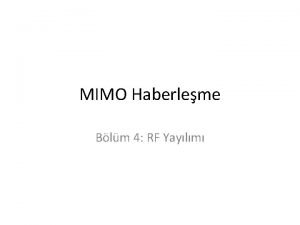EE 359 Lecture 15 Outline Introduction to MIMO










- Slides: 10

EE 359 – Lecture 15 Outline Introduction to MIMO Communications l MIMO Channel Decomposition l MIMO Channel Capacity l MIMO Beamforming l Diversity/Multiplexing Tradeoffs l

Review of Last Lecture l Adaptive Mod. with Restriction: M(g) MD l Map g to straight line M(g)=g/g*k l Pick region boundaries gi such that M(gi) MD l Use inverse waterfilling power control per region l Practical constraints in adaptive For typical Dopplers, modulation constant for 10 s to l Constellation l Estimation l update rate 100 s of symbol times error and delay Lead to irreducible error floor that depends on

Multiple Input Multiple Output (MIMO)Systems l MIMO systems have multiple (r) transmit and receiver antennas l With perfect channel estimates at TX and RX, decomposes into r independent channels RH-fold capacity increase over SISO system l Demodulation complexity reduction l Can also use antennas for diversity (beamforming) l Leads to capacity versus diversity tradeoff in l

MIMO Decomposition l Decompose channel through transmit ~ ~ precoding (x=Vx) and receiver shaping (y=UHy) ~ ~ ~ y=Hx+n H=USVH y=S x+n ~ yi=si~ x+n~i l Leads to RH min(Mt, Mr) independent channels with gain si (ith singular value of H) and AWGN l Independent channels lead to simple

Capacity of MIMO Systems l Depends on what is known at TX and RX and if channel is static or fading l For static channel with perfect CSI at TX and RX, power water-filling over space is optimal: l l In fading waterfill over space (based on shortterm power constraint) or space-time (long-term constraint) Without transmitter channel knowledge, capacity metric is based on an outage probability

Beamforming l Scalar codes with transmit precoding y=u. HHvx+u. Hn • Transforms system into a SISO system with diversity. • Array and diversity gain • Greatly simplifies encoding and decoding. • Channel indicates the best direction to beamform • Need “sufficient” knowledge for optimality of beamforming

Optimality of Beamforming Mean Information Covariance Information

Diversity vs. Multiplexing l Use antennas for multiplexing or diversity Error Prone l Low Pe Diversity/Multiplexing tradeoffs (Zheng/Tse)

How should antennas be used? l Use antennas for multiplexing: High-Rate Quantizer ST Code High Rate Decoder Error Prone l Use antennas for diversity Low-Rate Quantizer ST Code High Diversity Decoder Low Pe Depends on end-to-end metric: Solve by optimizing app. metric

Main Points l MIMO systems exploit multiple antennas at both TX and RX for capacity and/or diversity gain l With TX and RX channel knowledge, channel decomposes into independent channels Linear capacity increase with number of TX/RX antennas l Without TX CSI, capacity vs. outage is the capacity metric l l MIMO introduces diversity/multiplexing tradeoff



